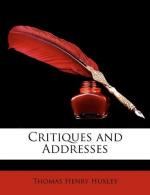“Ceterum Britanniam qui mortales initio coluerint, indigenae an advecti, ut inter barbaros, parum compertum. Habitus corporum varii: atque ex eo argumenta: nam rutilae Caledoniam habitantium comae, magni artus Germanicam originem asseverant. Silurum colorati vultus et torti plerumque crines, et posita contra Hispaniam, Iberos veteres trajecisse, easque sedes occupasse, fidem faciunt. Proximi Gallis et similes sunt; seu durante originis vi, seu procurrentibus in diversa terris, positio coeli corporibus habitum dedit. In universum tamen aestimanti, Gallos vicinum solum occupasse, credibile est; eorum sacra deprehendas, superstitionum persuasione; sermo haud multum diversus."[1]
[Footnote 1: Taciti Agricola, c. 11.]
This passage, it will be observed, contains statements as to facts, and certain conclusions deduced from these facts. The matters of fact asserted are: firstly, that the inhabitants of Britain exhibit much diversity in their physical characters; secondly, that the Caledonians are red-haired and large-limbed, like the Germans; thirdly, that the Silures have curly hair and dark complexions, like the people of Spain; fourthly, that the British people nearest Gaul resemble the “Galli.”
Tacitus, therefore, states positively what the Caledonians and Silures were like; but the interpretation of what he says about the other Britons must depend upon what we learn from other sources as to the characters of these “Galli.” Here the testimony of “divus Julius” comes in with great force and appropriateness. Caesar writes:—
“Britanniae pars interior ab iis incolitur, quos natos in insula ipsi memoria proditum dicunt: marituma pars ab iis, qui predae ac belli inferendi causa ex Belgio transierant; qui omnes fere iis nominibus civitatum appellantur quibus orti ex civitatibus eo pervenerunt, et bello inlato ibi permanserunt atque agros colere coeperunt."[1]
[Footnote 1: De Bello Gallico, v. 12.]
From these passages it is obvious that in the opinion of Caesar and Tacitus, the southern Britons resembled the northern Gauls, and especially the Belgae; and the evidence of Strabo is decisive as to the characters in which the two people resembled one another: “The men (of Britain) are taller than the Kelts, with hair less yellow; they are slighter in their persons."[1]
[Footnote 1: “The Geography of Strabo.” Translated by Hamilton and Falconer; v. 5.]
The evidence adduced appears to leave no reasonable ground for doubting that, at the time of the Roman conquest, Britain contained people of two types, the one dark and the other fair complexioned, and that there was a certain difference between the latter in the north and in the south of Britain: the northern folk being, in the judgment of Tacitus, or, more properly, according to the information he had received from Agricola and others, more similar to the Germans than the latter. As to the distribution of these stocks, all that is clear is, that the dark people were predominant in certain parts of the west of the southern half of Britain, while the fair stock appears to have furnished the chief elements of the population elsewhere.




